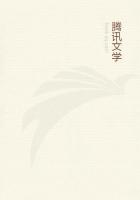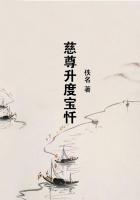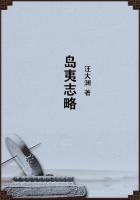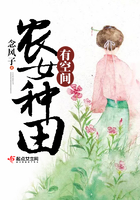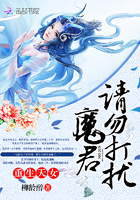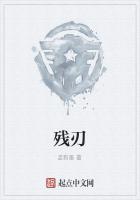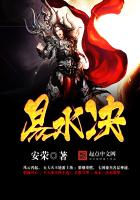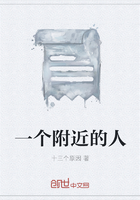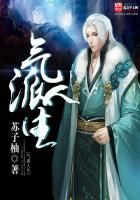Down the garden-steps the mother hurries headlong; but she can hardly be in time. And of all this--sufficient, one would say, for a fairly-sized canvas--the artist has managed to give a vivid impression in a block of three inches by two! Then, again, like Hogarth once more, he rejoices in multiplications of dilemma. What, for instance, can be more comically pathetic than the head-piece to the "Contents" in vol. I. of the "Birds"? The old horse has been seized with an invincible fit of stubbornness. The day is both windy and rainy. The rider has broken his stick and lost his hat;but he is too much encumbered with his cackling and excited stock to dare to dismount. Nothing can help him but a Deus ex machina,--of whom there is no sign.
Besides his humour, Bewick has a delightfully rustic side, of which Hogarth gives but little indication. From the starved ewe in the snow nibbling forlornly at a worn-out broom, to the cow which has broken through the rail to reach the running water, there are numberless designs which reveal that faithful lover of the field and hillside, who, as he said, "would rather be herding sheep on Mickle bank top" than remain in London to be made premier of England. He loved the country and the country-life; and he drew them as one who loved them. It is this rural quality which helps to give such a lasting freshness to his quaint and picturesque fancies; and it is this which will continue to preserve their popularity, even if they should cease to be valued for their wealth of whimsical invention.
In referring to these masterpieces of Bewick's, it must not be forgotten that he had the aid of some clever assistants. His younger brother John was not without talent, as is clear from his work for Somervile's "Chace," 1796, and that highly edifying book, the "Blossoms of Morality." Many of the tail-pieces to the "Water Birds" were designed by Robert Johnson, who also did most of the illustrations to Bewick's "Fables" of 1818, which were engraved by Temple and Harvey, two other pupils. Another pupil was Charlton Nesbit, an excellent engraver, who was employed upon the "Birds,"and did good work in Ackermann's "Religious Emblems" of 1808, and the second series of Northcote's "Fables." But by far the largest portion of the tail-pieces in the second volume of the "Birds" was engraved by Luke Clennell, a very skilful but unfortunate artist, who ultimately became insane. To him we owe the woodcuts, after Stothard's charming sketches, to the Rogers volume of 1810, an edition preceding those already mentioned as illustrated with steel-plates, and containing some of the artist's happiest pictures of children and amorini. Many of these little groups would make admirable designs for gems, if indeed they are not already derived from them, since one at least is an obvious copy of a well-known sardonyx--("The Marriage of Cupid and Psyche.") This volume, generally known by the name of the "Firebrand" edition, is highly prized by collectors; and, as intelligent renderings of pen and ink, there is little better than these engravings of Clennell's. {12}({12} The example, here copied on the wood by M. Lacour, is a very successful reproduction of Clennell's style.)
Finally, among others of Bewick's pupils, must be mentioned William Harvey, who survived to 1866. It has been already stated that he engraved part of the illustrations to Bewick's "Fables," but his best known block is the large one of Haydon's "Death of Dentatus."Soon after this he relinquished wood-engraving in favour of design, and for a long period was one of the most fertile and popular of book-illustrators. His style, however, is unpleasantly mannered;and it is sufficient to make mention of his masterpiece, the "Arabian Nights" of Lane, the illustrations to which, produced under the supervision of the translator, are said to be so accurate as to give the appropriate turbans for every hour of the day. They show considerable ******* of invention and a large fund of Orientalism.
Harvey came to London in 1817; Clennell had preceded him by some years; and Nesbit lived there for a considerable time. What distinguishes these pupils of Bewick especially is, that they were artists as well as engravers, capable of producing the designs they engraved. The "London School" of engravers, on the contrary, were mostly engravers, who depended upon others for their designs. The foremost of these was Robert Branston, a skilful renderer of human figures and indoor scenes. He worked in rivalry with Bewick and Nesbit; but he excelled neither, while he fell far behind the former. John Thompson, one of the very best of modern English engravers on wood, was Branston's pupil. His range was of the widest, and he succeeded as well in engraving fishes and birds for Yarrell and Walton's "Angler," as in illustrations to Moliere and "Hudibras." He was, besides, a clever draughtsman, though he worked chiefly from the designs of Thurston and others. One of the most successful of his illustrated books is the "Vicar of Wakefield,"after Mulready, whose simplicity and homely feeling were well suited to Goldsmith's style. Another excellent engraver of this date is Samuel Williams. There is an edition of Thomson's "Seasons," with cuts both drawn and engraved by him, which is well worthy of attention, and (like Thompson and Branston) he was very skilful in reproducing the designs of Cruikshank. Some of his best work in this way is to be found in Clarke's "Three Courses and a Dessert,"published by Vizetelly in 1830.

